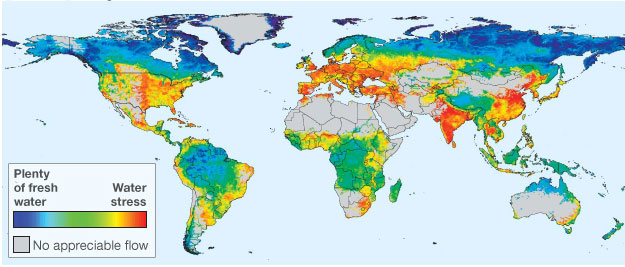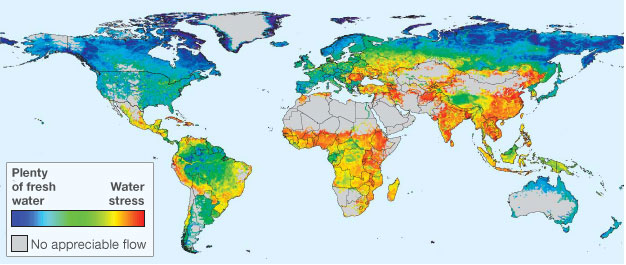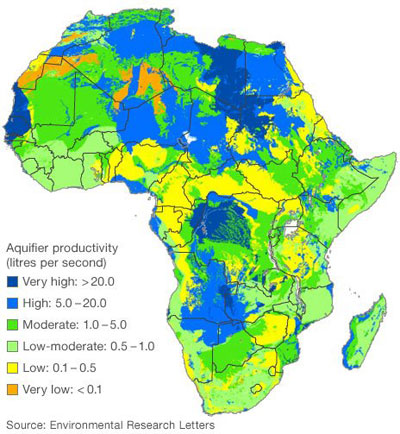Without the water management schemes we’ve implemented, such as dams, pipelines and other means of securing water supplies, this is what the state of water security in the world would look like…

Aside from India and China, whose situation doesn’t improve much in the next example, the “natural” picture above does not look so great for the United States and much less so for Europe. Yet below, when we look at the “managed” state of things, the U.S. and Europe are shored up while the tables are turned for the worse in Africa.

Unsurprisingly, it’s the lack of money in poorer nations perpetuating the lack of water. (That and the notion that they should be more environmental sound about their improvements, unlike in developed countries where water security often comes at the cost of nature in general.) There is, however, some good news for Africa. A new study has revealed a huge reservoir of groundwater totaling over 100 times the volume of water found above ground. The catch is it’s not a renewable source, as these aquifers were last filled over 5,000 years ago.

The key will be using these hidden resources to cover deficiencies in the short term while sustainable solutions for the future are put into place. It doesn’t sound like the best job to give to humans, but so it goes. To complicate matters worse, who knows what the picture will look like as climate change continues to usher us into the unknown. If all of our efforts so far have still left 80% of the world’s population with an insecure supply of the one liquid we can’t live without, <insert smart-ass comment about priorities without using the word ‘stupid’>.
[World/Africa maps via BBC (Thanks, Paul!); Water security study from Nature, African groundwater study from IOPscience]


A Vote to Remember
Paying attention to politics is not a rewarding effort. It’s one thing to hear about...